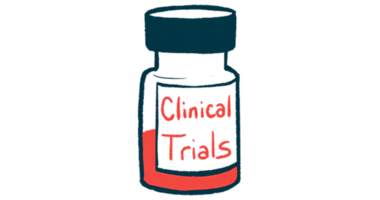Vyvgart outperforms standard treatment in real-world study
Faster, more effective than corticosteroids, immunosuppressants

Vyvgart (efgartigimod alfa-fcab) is faster and more effective at reducing symptoms to a minimum than standard treatment with corticosteroids and/or immunosuppressants in adults with myasthenia gravis (MG), a real-world study showed.
Data showed that Vyvgart was particularly effective at easing symptoms affecting muscles involved in breathing, speech, and swallowing, and also reduced the use and dosage of corticosteroids.
The study, “Efficacy of multi-cycle Efgartigimod in achieving minimal symptom expression in myasthenia gravis: A comparative multi-center study,” was published in International Immunopharmacology.
MG is characterized by muscle weakness and fatigue caused by self-reactive antibodies that attack proteins involved in nerve-muscle communication, most commonly the acetylcholine receptor (AChR). The disease can affect only the muscles of the eyes and eyelids (ocular MG), or be more widespread and not restricted to any particular muscle group (generalized MG, or gMG).
Infusion therapy vs standard treatment
Vyvgart is an infusion therapy for adults with gMG who test positive for self-reactive antibodies against AChR. It’s administered intravenously, or directly into the bloodstream. Patients initially receive weekly infusions over four weeks, followed by additional cycles of four weekly injections, depending on the response.
Minimal symptom expression, or MSE, is a significant milestone in MG treatment. It’s defined as a score of 1 or lower on the MG Activities of Daily Living (MG-ADL) scale, which assesses the impact of MG on day-to-day activities.
“Early MSE is recognized as an independent predictor of better long-term prognosis, providing significant benefits for MG patients,” the researchers wrote.
The research team in China evaluated MSE as a treatment goal among MG patients treated with Vyvgart in real-world settings versus those receiving standard treatment with corticosteroids or oral immunosuppressants.
A total of 76 patients were treated with Vyvgart, and 124 received standard-of-care treatment. There were no significant differences between the groups regarding gender, age, disease duration, MGFA classification, presence of autoantibodies, thymus tumor, or initial medications. MG-ADL scores, however, were significantly higher (worse) in the Vyvgart group than in the standard-of-care group before treatment (baseline).
Data showed that more Vyvgart-treated patients achieved MSE than those receiving standard of care (73.7% vs. 22.6%) and did so faster (median 0.7 months vs. 3.3 months). Overall, patients receiving Vyvgart were nearly 10 times more likely to achieve MSE than those in the standard-of-care group. The results were similar after adjusting for baseline MG-ADL scores.
Because of differences in baseline MG-ADL scores, the team divided the participants into three groups based on disease severity: mild (MG-ADL of 5 points or lower), moderate (MG-ADL between 5 and 10 points), and severe (MG-ADL of at least 11 points). All Vyvgart groups were more likely to reach MSE and in a shorter timeframe, regardless of initial disease severity.
Researchers then examined the impact of Vyvgart on four muscle groups: ocular, limb/gross motor, bulbar (face and neck muscles involved in speech and swallowing), and respiratory. All muscle groups showed significant improvement, particularly respiratory and bulbar muscles, which were commonly affected in severe cases and exhibited high disease activity, according to the team.
At the study’s start, 64 patients (84.2%) in the Vyvgart group were being treated with corticosteroids and/or immunosuppressants. At the last visit, about half (44.7%) no longer required corticosteroids. Daily corticosteroid dose was reduced from 20 mg/day to 10 mg/day, with significantly fewer patients requiring more than 20 mg/day after being treated with Vyvgart than at baseline (9.2% vs. 46.1%).
Vyvgart’s overall safety profile was favorable, with nine (11.8%) mild to moderate adverse events reported, including pulmonary infection (2.6%), headache (3.9%), and fatigue (2.6%).
“[Vyvgart] can be an effective and a fast-acting therapeutic option for MG, capable of inducing early MSE and reducing the need for oral corticosteroid, particularly in patients with respiratory and bulbar muscle symptoms,” the researchers wrote.








Leave a comment
Fill in the required fields to post. Your email address will not be published.